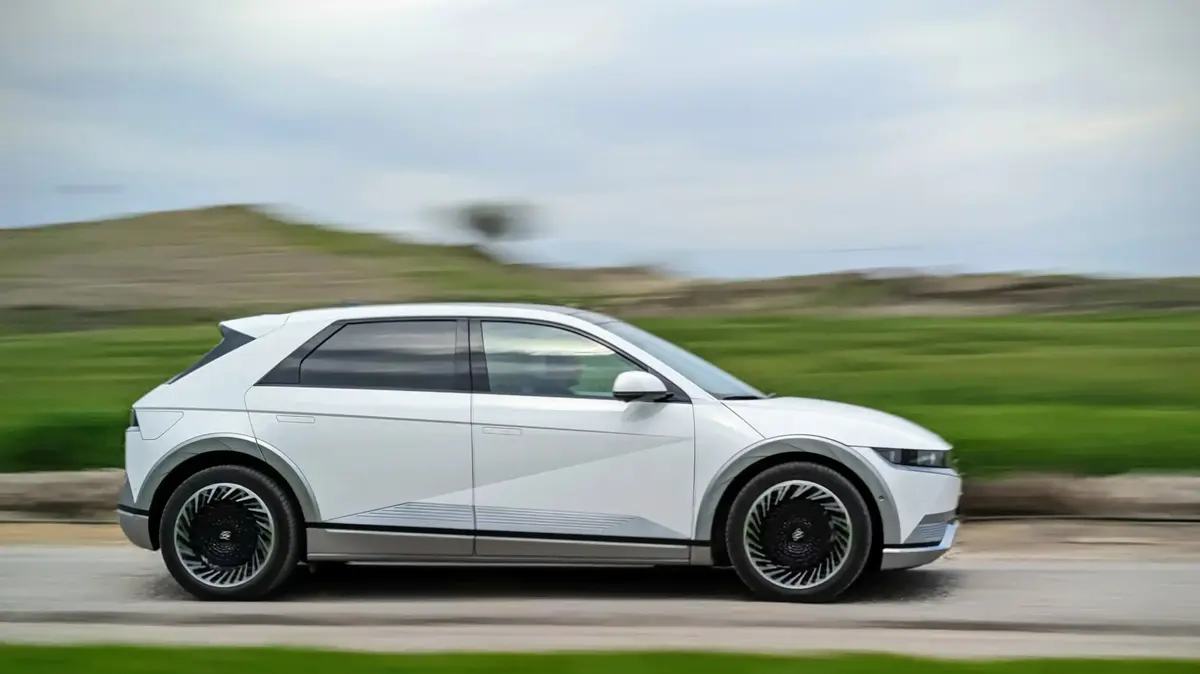vehicle
Car News
The car is green, the battery is black
Beyond electric vehicles is seen as an essential part of the solution to the greenhouse gas emissions problem of the automotive industry - but the batteries used in these vehicles are harmful to the environment.
Will a new development of a non-metallic organic battery solve the problem?
Tags
electric car
Batteries
ecology
Air Pollution
Jonathan Singer, Angle
Friday, 18 June 2021, 09:00 Updated: 09:29
Share on Facebook
Share on WhatsApp
Share on general
Share on general
Share on Twitter
Share on Email
0 comments
Explanation of using a system to prevent children from forgetting ...
New Lexus NX
Yamaha MT-09 SP
Peugeot 308 2021
Kia Sorrento 2021
A woman helps another woman to shop in reverse - until the twist ...
Road test: AIWAYS U5
BMW iX3 in Israel
Transportation system in the Meron disaster
Green battery for a green car (Angle - Israel News Agency, Ecological and Environmental Science News Agency)
From laptops, through our phones to pacemakers - batteries surround us anytime, anywhere.
The batteries allow us to enjoy the modern electric world without being connected to an electrical outlet like the umbilical cord.
The use of batteries is expected to rise significantly in light of forecasts that the presence of electric vehicles on the road will become much more significant in the next decade.
However, the use of batteries of the types that exist today has serious environmental (and moral) consequences.
In a new American study, researchers were able to produce a battery made up of polypeptides - chains of amino acids, the natural and common substances that also make up the proteins in our body - that can be produced and recycled without causing environmental damage.
More on Walla!
Tesla's tough May
To the full article
Will electric cars replace air pollution with soil pollution?
(Photo: AP)
But before the organic batteries, let's start from the base.
Batteries include two poles with opposite electrical charges: one positive and the other negative.
When an electric circuit that includes the battery closes, electrons (particles with a negative charge) move from the negative side to the positive, and the electric current that this movement creates allows us to play Candy Crush while riding a bus.
When the battery is charged, the contrast between the two poles increases again.
The queen of batteries today is a lithium-ion battery, which is relatively small and inexpensive, produces a lot of energy and can be discharged and charged multiple times without significantly compromising its efficiency.
This battery entered commercial use in the early 1990s by Sony, became the standard in mobile phones and even won its developers the Nobel Prize in Chemistry, and was recently adopted by the electric vehicle industry.
The battery is one of the more expensive components in electric cars (Photo: AP)
Despite the benefits of lithium-ion batteries, the voices that are turning the spotlight on their problematic aspects have recently intensified.
First, besides lithium, which is a relatively common metal, the production of a lithium-ion battery also requires a small amount of cobalt and nickel - rare and more expensive metals.
These metals' stocks in the world are limited and limited, and the way they are produced today is very morally problematic: in the Congo, the world's largest cobalt supplier, tens of thousands of children work in harsh conditions that include descending into deep manual mining mines that are in constant danger of collapse.
Many times their work leads to injury or even death.
In addition, the metals cause environmental pollution, and exposure to them harms residents living near them and leads to a significant increase in the incidence of respiratory problems and congenital defects in these communities.
Tens of thousands of children work in harsh conditions in mines in the Congo, exposed to environmental pollution, injuries and death (Photo: AP)
In addition, it is now very difficult to recycle lithium-ion batteries.
Despite existing legislation in China, which began in 2018 to require electric vehicle battery manufacturers to set up collection and recycling channels for old batteries, and similar legislation planned in the EU, it is estimated that today only 5 percent of batteries are recycled.
The recycling process is slow, expensive and produces polluting waste materials that need to be treated, so manufacturers often prefer to give up the effort - and produce new batteries.
More on Walla!
Israeli company: We can recycle the emissions from the exhaust
To the full article
Metal-free battery
The new battery, the details of which were recently published in the prestigious scientific journal Nature, is intended to be a solution to these problems. The significant innovation in this battery is the fact that it does not use metals at all, but polypeptides: molecules that consist of several amino acids - which are the building blocks of the proteins found in the human body and any other biological system. "Nature has 20 amino acids, and their long chains make up proteins - whose properties are determined by the sequence of amino acids and by the way the chains fold," explains Prof. Nurit Ashkenazi, a faculty member in the Department of Materials Engineering at Ben-Gurion University.
"The polypeptide used in the battery presented in the article is actually a long chain of only one type of amino acid, called glutamic acid. The researchers used the polypeptide to shape the stable structure of the battery, and chemically bonded organic molecules that provide the electrical properties."
These molecules produce a negative pole on one side and a positive pole on the other side, thus actually completing the construction of the battery.
A number of companies, in which BMW has already stated that they will consume raw materials for batteries only from responsible sources (Photo: Manufacturer's website)
According to the study, the polypeptide battery has several advantages over the metal-based batteries.
First, the new battery can be easily disassembled into components after use using an acidic environment, and the researchers suggest a process that will allow a new battery to be rebuilt from the disassembled parts.
Second, the battery components can be manufactured in a laboratory, without the use of resources that create significant environmental damage.
However, the new battery also has a significant drawback: its performance is significantly lower than that of lithium-ion batteries of the same size in terms of energy it is able to provide.
The process of disassembling the batteries is complicated and especially very expensive (Photo: AP)
The batteries of the future?
Well, is Tesla's announcement expected to replace the harmful and difficult-to-recycle lithium-ion batteries with green, easy-to-disassemble polypeptide batteries?
Probably not soon, as this is just an initial research swallow.
And if we rely on an article published in 2020 by a team of Israeli-German battery researchers, including Prof. Yair Ein-Eli, dean of the Faculty of Materials Science and Engineering at Ben-Gurion University, the lithium-ion batteries are probably with us to stay.
"It is difficult to compete with lithium-ion batteries in terms of the high energy it provides and the number of cycles of its use," says Ein-Eli.
"Our insight is that these are probably the batteries that will be used in the electric vehicle industry for generations to come."
Lithium-ion batteries will continue to accompany us in the coming decades (Photo: Manufacturer's website, Volvo)
At the same time, the new development proves the feasibility of producing batteries based on similar principles in the future.
Beyond that, it may be possible to use non-metallic batteries, such as the polypeptide battery, in other industries as well.
"A battery made of natural material can be used in the future to propel a component that will enter the human body, detect a problem, cure it - and will decay and disappear without negative effects after it finishes its work," says Ashkenazi.
In addition to the polypeptide batteries, a number of other batteries are currently being developed that use cheaper and more environmentally friendly materials, such as silicone and zinc, among others by Professor Ein-Eli.
"I predict that in 2040 we will see a diverse basket of batteries that meet different needs: high energy content, low price, recyclability and consideration for environmental needs," concludes Ein-Eli.
The article was prepared by Zavit - the news agency of the Israeli Association of Ecology and Environmental Sciences
Share on Facebook
Share on WhatsApp
Share on general
Share on general
Share on Twitter
Share on Email
0 comments









